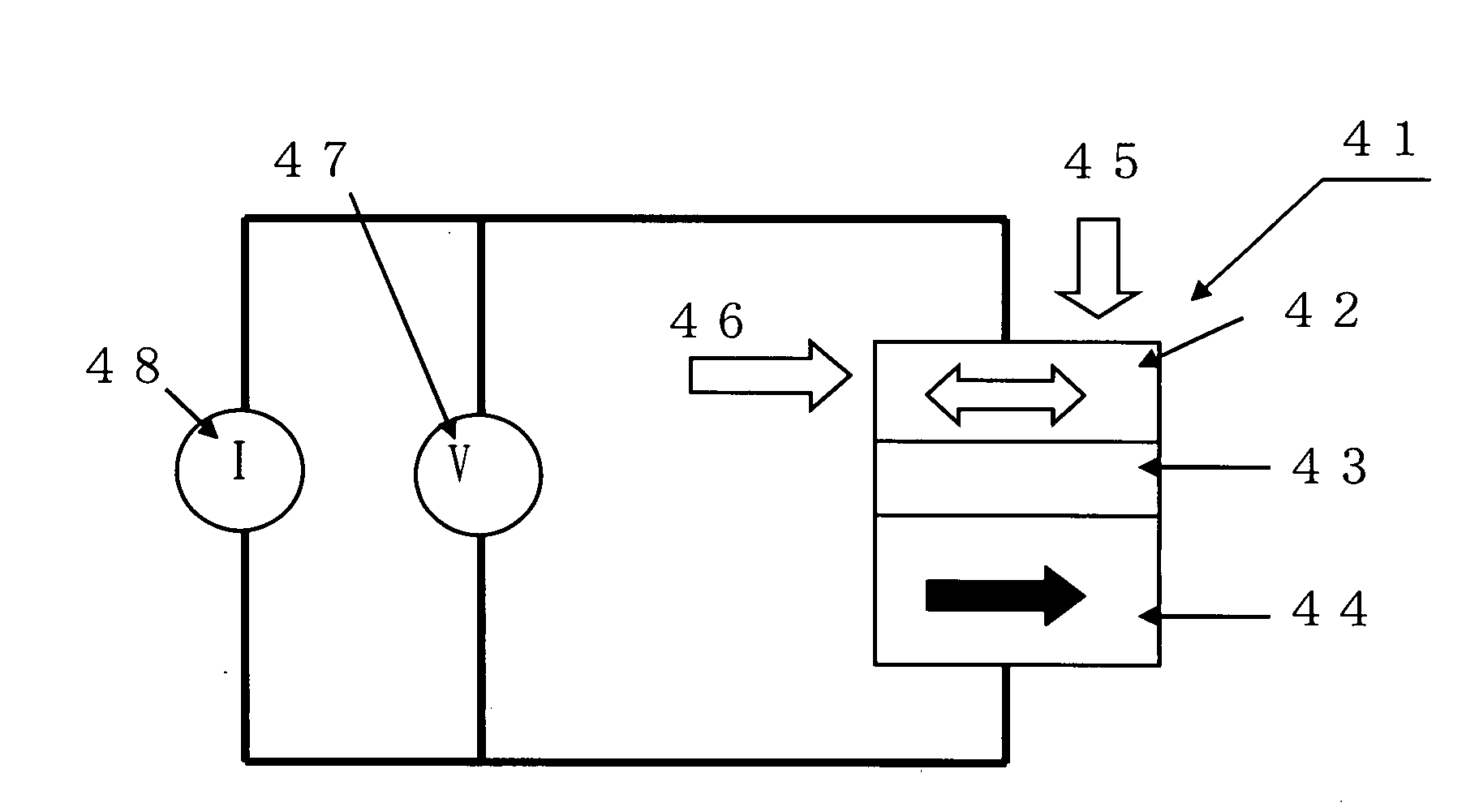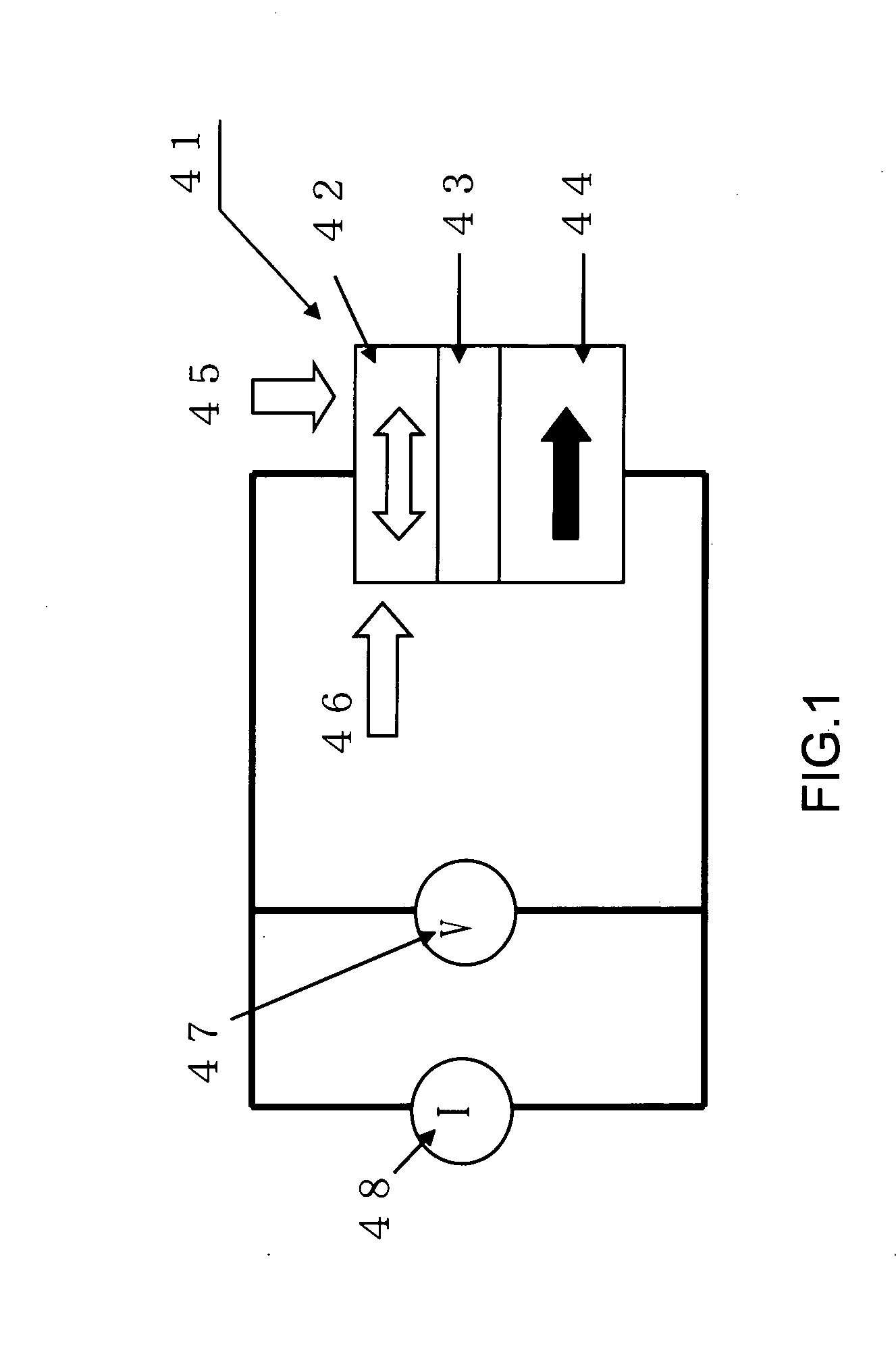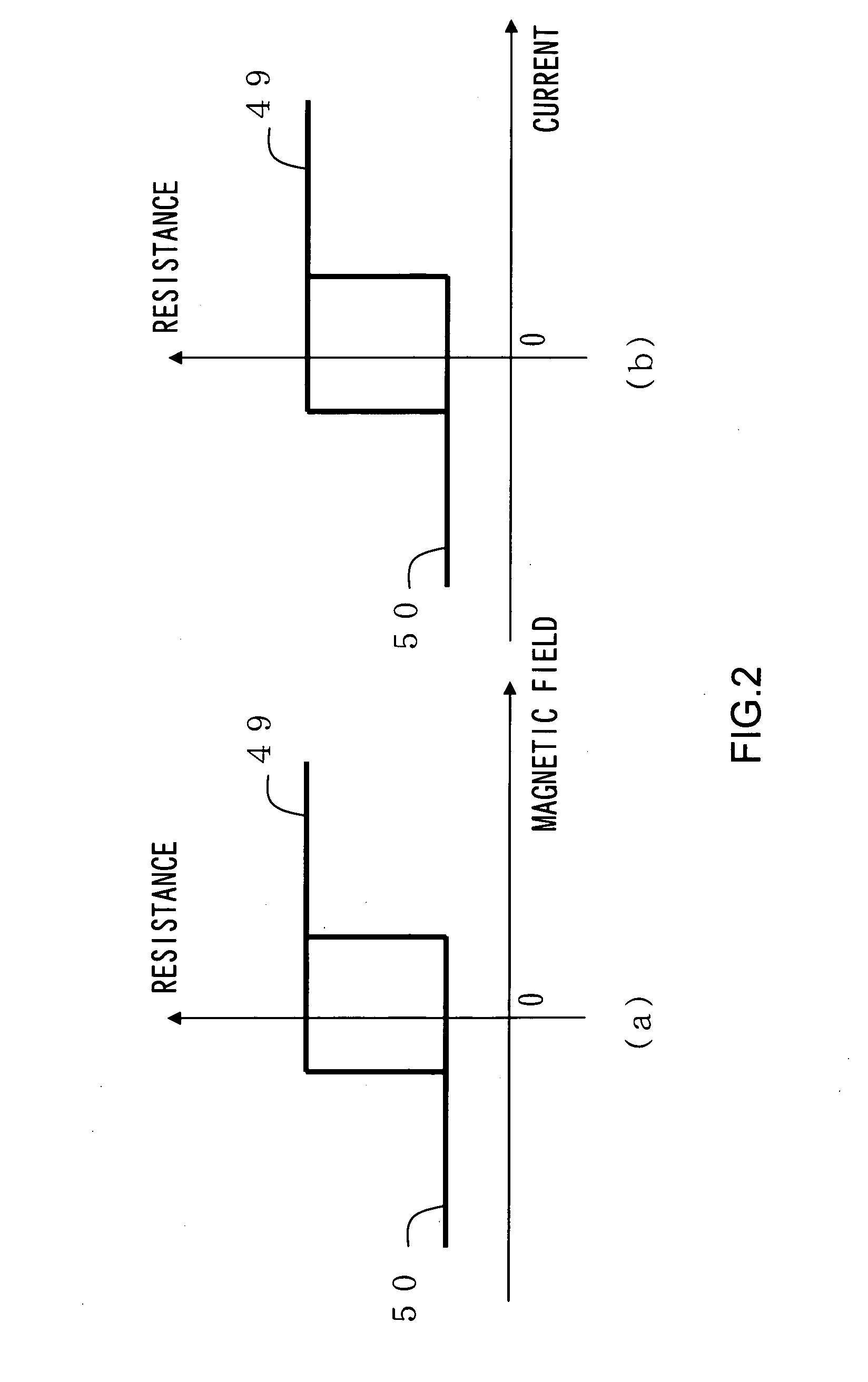Random number generating device
generating device technology, applied in the field of random number generating devices, can solve the problems of inability to achieve the necessary operation rate, difficult to select a pair of negative resistive elements for a random number generator, and the circuit has not been put into practice, so as to achieve the effect of reducing power consumption, high trueness, and easy setting of appropriate magnetization curren
- Summary
- Abstract
- Description
- Claims
- Application Information
AI Technical Summary
Benefits of technology
Problems solved by technology
Method used
Image
Examples
first embodiment
[0076]Hereinafter, examples of random number generating devices according to embodiments according to the present invention are explained with reference to the attached drawings.
(Example in which a CPP-GMR Element is Used)
[0077]In an experiment of current injection magnetization inversion, for which as a magnetoresitive element a CPP-GMR element (i.e., an element having electrodes on upper and lower sides of a GMR (Giant Magneto Resistance) sensor film to allow current to flow perpendicularly to the film surface) is used, it is indicated that the probability of inversion of the magnetization free layer can be controlled.
[0078]FIG. 3 shows a construction diagram illustrating a CPP-GMR element used in this experiment.
[0079]A CPP-GMR element 10 shown in FIG. 3 has a construction that includes a substrate 11 having laminated thereon in order a buffer layer 12, an antiferromagnetic layer 13, a magnetization fixed layer 14, which is a 2.5-nm-thick Co—Fe layer, an interlayer 15, which is a...
second embodiment
[0095](Example in which MgO-TMR Element is Used)
[0096]In 2004, Yuasa, Parkin et al. found that a tunnel magnetoresistive element (MgO-TMR element) having an interlayer composed of crystalline magnesium oxide exhibits giant tunneling magnetoresistance (see Non-Patent Reference 4 (Experiment on a tunneling magnetoresistive element having giant magnetoresistance with an MgO barrier layer)). Thereafter, extensive research has been made on giant tunneling magnetoresistance in an MgO-TMR element. At present, it has become possible to obtain a magnetoresistance ratio of from several tens percents (%) to hundred and several tens percents (%) even in a low resistance region (i.e., region in which the sheet resistance value is on the range of several Ωμm2.
[0097]In such a low resistance MgO-TMR element, current injection magnetization inversion is possible. By using a low resistance MgO-TMR element in the random number generating device according to the present invention, an output of random n...
third embodiment
[0111](Example of High-Rate Action, Integration, and Low Power Consumption)
[0112]The rate of current injection magnetization inversion is very high and it has been reported based on the experiment using a CPP-GMR element (see, Non-Patent Document 5 (i.e., experiment that indicates that the current injection magnetization inversion in the CPP-GMR element takes place in about 200 ps) that magnetization inversion occurs using current pulses of several hundreds picoseconds width. Therefore, employing the current pulses of 1 ns to 10 ns width for resetting current and setting current, the random number generating device according to the present invention can be operated. In this condition, the generation rate of random numbers is estimated to become around 100 megabits / second. This rate is 1,000 times the generation rate of random numbers so far reported (see Non-Patent Reference 2).
[0113]Since the current injection magnetization inversion type magnetoresistive element may be fabricated ...
PUM
 Login to View More
Login to View More Abstract
Description
Claims
Application Information
 Login to View More
Login to View More - R&D
- Intellectual Property
- Life Sciences
- Materials
- Tech Scout
- Unparalleled Data Quality
- Higher Quality Content
- 60% Fewer Hallucinations
Browse by: Latest US Patents, China's latest patents, Technical Efficacy Thesaurus, Application Domain, Technology Topic, Popular Technical Reports.
© 2025 PatSnap. All rights reserved.Legal|Privacy policy|Modern Slavery Act Transparency Statement|Sitemap|About US| Contact US: help@patsnap.com



